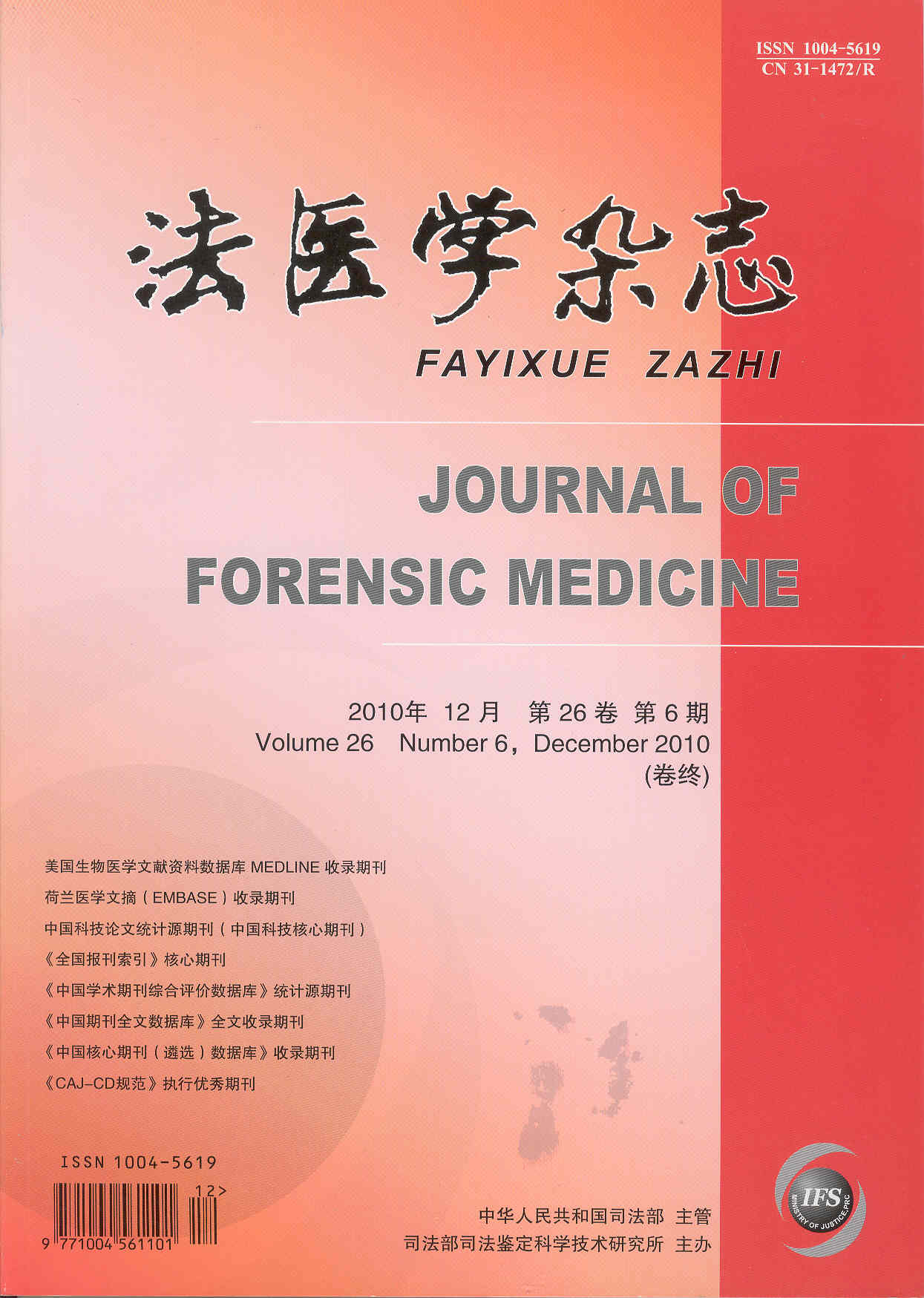|
|
Distribution of Tramadol in Acute Poisoned Rats
LIANG MAN, CAI XIANG-YANG, JIN MING
2010, 26(6):
436-439.
DOI: 10.3969/j.issn.1004-5619.2010.06.009
Objective To develop a rapid and accurate gas chromatography method and investigate the distribution of tramadol in acute poisoned rats for information of samples selection and results evaluation in forensic identification. Methods After an oral administration of tramadol at 1 140 mg/kg(5×LD50), concentrations of tramadol in rats’ biological fluids and tissues were determined by gas chromatography. Results The limit of detection of tramadol in blood and urine was 0.1 μg/mL and the limit of detection in liver was 0.1 μg/g. The intra-day precision and inter-day precision were within 3.1% and 5.5% respectively, and the recovery of tramadol in blood was more than 98%. The average levels of tramadol displayed in descending order of heart blood, liver, peripheral blood, urine, vitreous humor, kidney, lung, spleen, heart, brain respectively. Conclusion The established method could meet the requirements for toxicological analysis, and the results of the study suggest that blood, urine, liver, lung and kidney are suitable samples for forensic toxicological analysis in tramadol poisoning cases.
Related Articles |
Metrics
|


